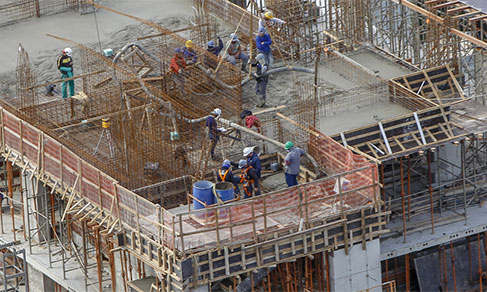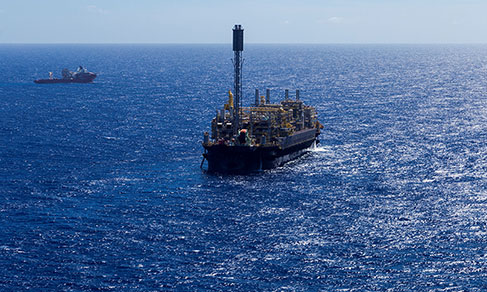IPCA
Inflation stays at 0.47% in May, driven by high in airfares
June 09, 2022 09h00 AM | Last Updated: June 16, 2022 10h53 AM

Inflation stood at 0.47% in May, after reaching 1.06% in April. In the year, the indicator accumulates a high of 4.78% and, in the last 12 months, of 11.73%, below the 12.13% recorded in the 12 previous months. In May 2021, the change had been 0.83%. The data are from the Extended National Consumer Price Index (IPCA), released today (June 9) by the IBGE.
In May, the biggest change came from the Wearing apparel group, with a rise of 2.11% and 0.09 pp of contribution. The biggest impact (0.30 pp) came from Transportation (1.34%), which decelerated in relation to the previous month (1.91%). In the case of Transportation, the increase was driven by airfares (18.33%), which had already risen in April (9.48%), with the largest positive individual impact on the monthly index (0.08 pp), together with with pharmaceutical products, which rose 2.51% (impact of 0.08 pp) and belong to the Health and personal care group (1.01%).
“It is worth mentioning that airfares are collected two months in advance. In this case, airfare prices were collected in March for trips that were due in May. The increase is caused by two factors: higher costs due to the increase in fuel prices; and demand pressure, with increased consumption, after a period of repressed demand for services, especially those rendered to families. This also impacts food away from home and personal care items”, explains IPCA manager Pedro Kislanov.
In the case of pharmaceutical products, an increase of up to 10.89% in the price of medicines was authorized in April. This increase may have been applied by retailers gradually, having an impact on the index both in April and in May, although the change was smaller last month. "But as the segment has weight, it ends up impacting a lot", justifies the IPCA manager.
Another highlight in May was the deceleration of the Food and beverages segment, which registered 0.48%, compared to a high of 2.06% in April. Mr. Kislanov explains that products that had been rising a lot had significant drops in May, such as tomatoes (-23.72%), carrots (-24.07%) and potatoes (-3.94%). He notes that there is a seasonal component because, normally, the beginning of the year is marked by higher food prices due to weather issues.
“Now we start the fall-winter period, which is drier and allows us to increase food supply and reduce prices. Another factor is that the prices of some foods, such as carrots (116.37% in 12 months), have risen a lot, which makes the basis for comparison very high. The price of milk, on the other hand, continues to rise, due to the off-season period, with drier pastures, and the cost inflation with the rise in the prices of commodities such as corn and soybeans, used in animal feed”, explains the IPCA manager.
Fuels also slowed down, after significant increases in refinery prices in March, which were passed on to the final consumer in March and April. The deceleration in fuel prices (1.00%) in relation to the previous month (3.20%) was mainly due to gasoline, which changed from 2.48% in April to 0.92% in May.
“There was even a drop in the price of ethanol (-0.43%), after an increase of 8.44% in April. Despite the deceleration of fuels in general, diesel fuel rose by more than 3%. But the product has a small weight in the IPCA, impacting more heavy transportation means such as trucks and buses”, highlights Mr. Kislanov.
The only group to show a drop was Housing (-1.70%), contributing with an impact of -0.26 pp on the monthly index. The drop is due to the reduction in electricity bills, for the second month in a row, due to the change in the tariff flag. On April 16, the extra charge of R$ 14.20 for every 100 kWh consumed, related to the Water Scarcity flag, ceased, and the green flag came into effect, meaning no additional charge on the electricity bill.
Electricity changes in the areas ranged from -13.49% in Brasília - where there was a reduction in PIS/COFINS - to 6.97% in Fortaleza, due to the 24.23% increase in residential tariffs, applied from April 22nd. There were also tariff increases in the electricity bills in Recife (3.27%): increase of 18.77%, in effect since April 29; Salvador (2.56%): increase of 20.97%, in effect since April 22; Aracaju (0.79%): increase of 16.81%, as of April 22; and Campo Grande (-1.63%): increase of 17.14%, as of April 16th.
More about the survey
The IPCA covers families with incomes from 1 to 40 minimum wages, while the INPC covers families with incomes from 1 to 5 minimum wages, residing in the Metropolitan Areas of Belém, Fortaleza, Recife, Salvador, Belo Horizonte, Vitória, Rio de Janeiro, São Paulo, Curitiba, Porto Alegre, in addition to the Federal District and the municipalities of Goiânia, Campo Grande, Rio Branco, São Luís and Aracaju. Please, access the data on Sidra.




















